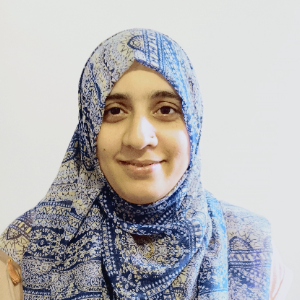Abstract:
Background: Normothermia (36.5°C to 37.5°C) is vital in neonatal resuscitation. Admission temperatures in preemies inversely correlate with mortality, every 1°C drop below the range increases mortality by 28%1. It also increases the risk of sepsis, intraventricular hemorrhage, necrotising enterocolitis, hypoglycemia, and death.2
Aim & Objectives: To improve normothermia rates in preterm admissions <32 weeks promoting better outcomes.
Methods: The project commenced in 2019 with planned 6 monthly cycles coinciding with the rotation of junior doctors. Focusing on pre-birth, birth, and post-birth areas, interventions were put in place to optimise preterm stabilisation.
Results: Audit cycles demonstrated inconsistencies in using thermoregulation procedures, variations in the timing of temperature checks from the delivery suite to the neonatal unit, and suboptimal delivery room temperatures. A thermoregulation flowchart was devised and an education initiative with bedside training was rolled out. The timing of temperature check was standardised and steps to establish normothermia before mobilising the baby to the neonatal unit were put in place. To achieve the best results, a multidisciplinary approach was adopted in subsequent cycles. The training was more robust with posters, and e-learning packages including videos. Representatives from midwifery, neonatal medical, and nursing were appointed to tackle issues from prebirth, during birth, and post-birth angles. Debrief forms were used to recognise and solve the hurdles in real time. Significant improvements were reflected in various areas of this project. Regular meetings between the multidisciplinary champions ensured that progress was maintained. We introduced continuous temperature monitoring probes with teaching packages to further optimise thermoregulation rates.
Conclusion: The project showed significant improvement in the overall normothermia rates in preterm stabilisation reflecting the importance of a multi-disciplinary approach and robust interventions.
Audience Take Away Notes:
- Maintaining Normothermia is a key aspect of neonatal resuscitation and avoids unfavourable outcomes in preterm infants. These thermoregulation steps can be employed in the local neonatal units to standardise the current practices and improve outcomes in preterm neonates
- It can be used as a framework by the neonatal medical team, nursing team and the midwives to manage temperature issues in preterm neonates
- The participants can take an initiative to do a quality improvement project in their neonatal units using the following standards: <32 weeks (36.5C-37.5C) Temperature recorded within an hour of birth
Normothermia within 1 hour




